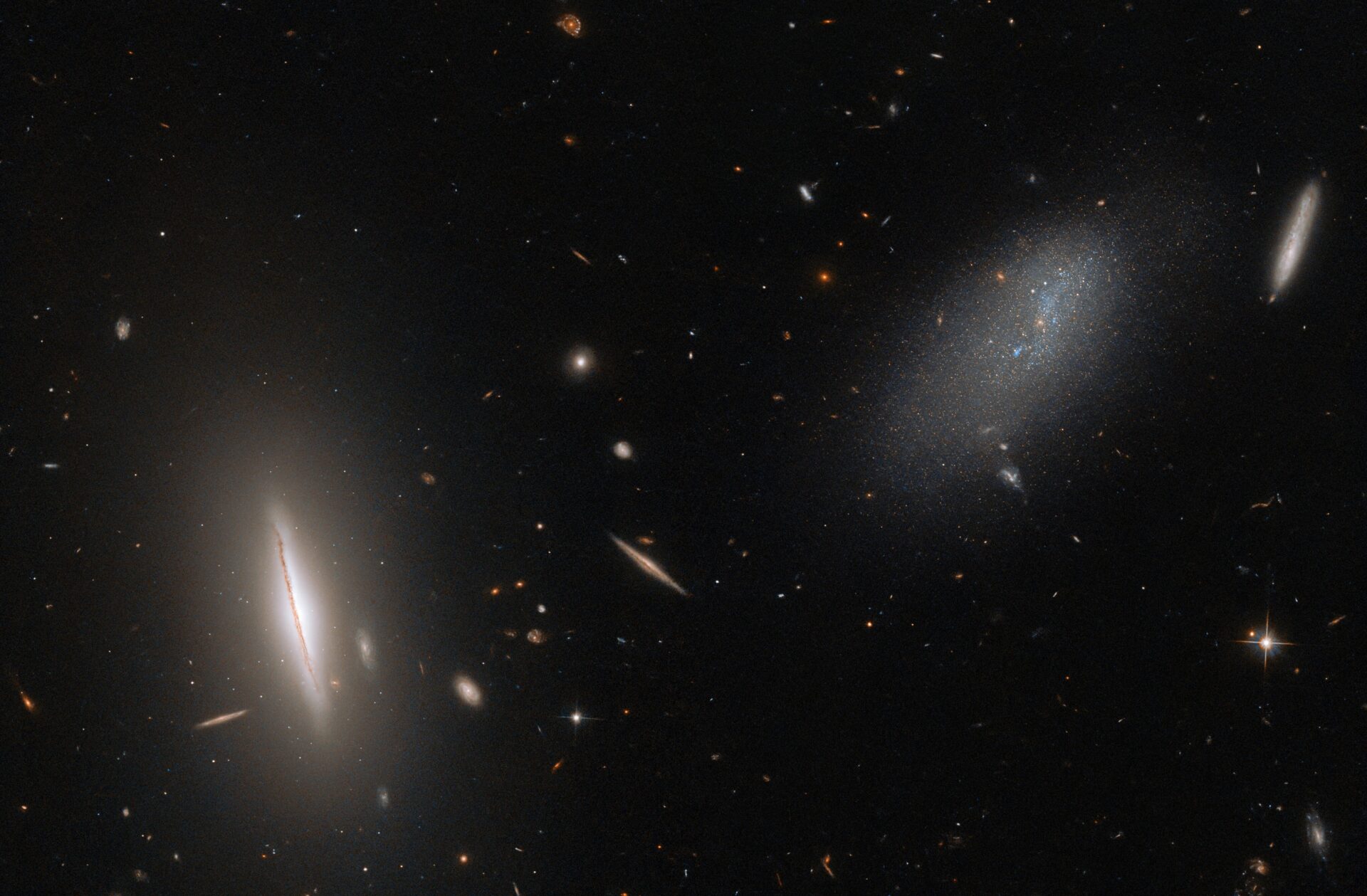At the end of last week, Hubble received a photo of a neighboring galaxy called LEDA 48062. It is located 30 million light-years from our Milky Way galaxy. Such a short distance makes it practically a “neighbor” from a cosmic point of view.

The galaxy was observed as part of a project called Every Known Nearby Galaxy, which aimed to use Hubble to study every galaxy within 10 megaparsecs (33 million light-years) from the Milky Way.
“By getting to know our galactic neighbors, astronomers can determine what types of stars are in different galaxies,” the scientists write.
Irregular Galaxy
In the resulting image, LEDA 48062 looks like a fuzzy cloud to the right of the center. Many other galaxies can also be seen in the photo, including a clearly defined band on the left — this is a lenticular galaxy called UGC 8603.
There are three main types of galaxies. Spiral galaxies, such as our Milky Way, with a central bulge surrounded by a flat disk with spiral-shaped arms. Elliptical galaxies that are smooth and have a uniform distribution of light, making them look like ellipses. There are also lenticular galaxies located halfway between the other two with a central bulge, but without a spiral structure.
But there is still a fourth class of galaxies, which is called “irregular galaxies” that do not have a clear structure. These are often galaxies that are originally one of the three types above, but are brought to an irregular shape by gravity. This happens when two galaxies merge, and their gravitational interaction can distort them into strange shapes.
Earlier we reported on how NASA was asking commercial space companies to save Hubble.
According to SciTechDaily
Follow us on Twitter to get the most interesting space news in time
https://twitter.com/ust_magazine

